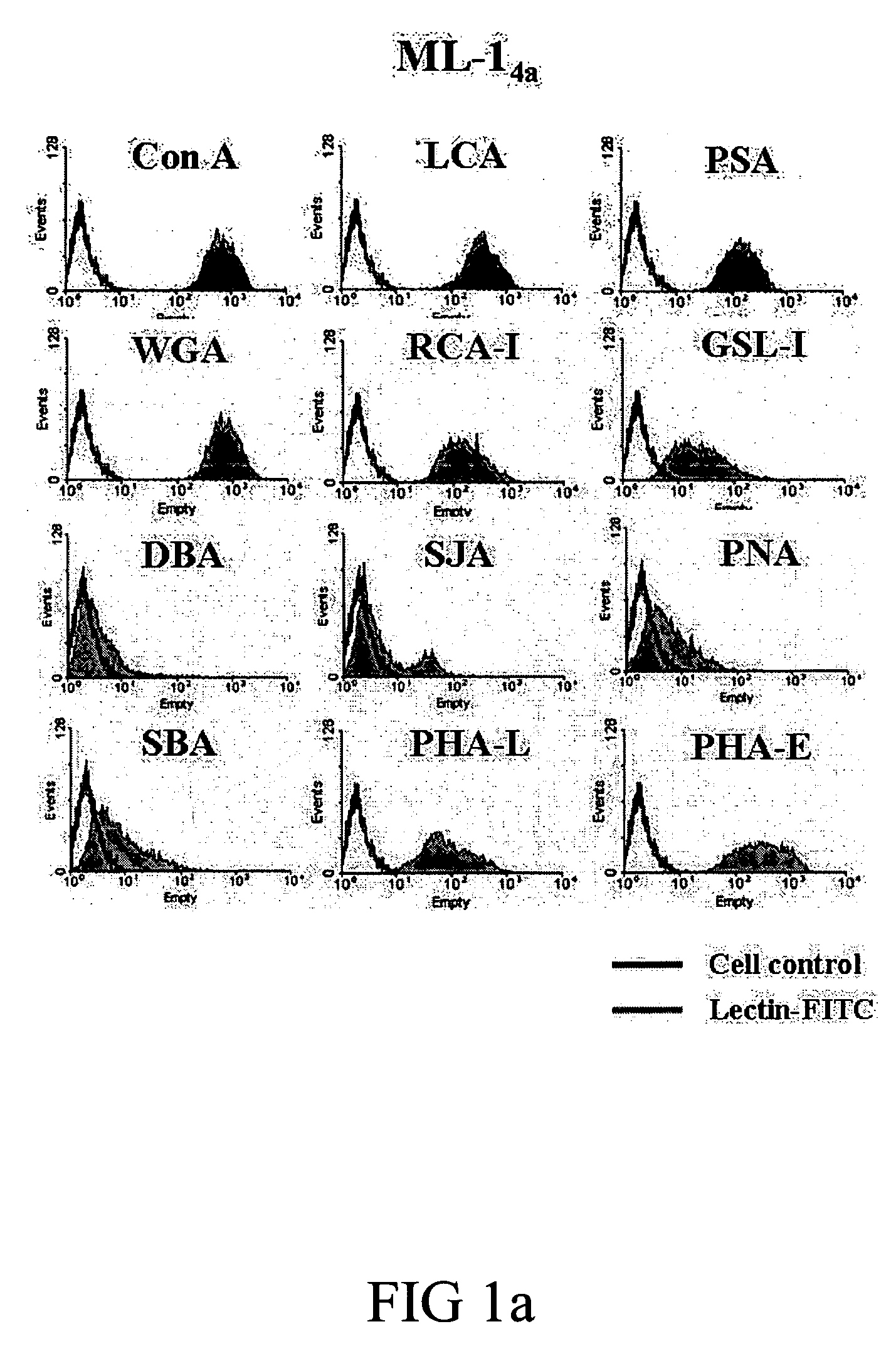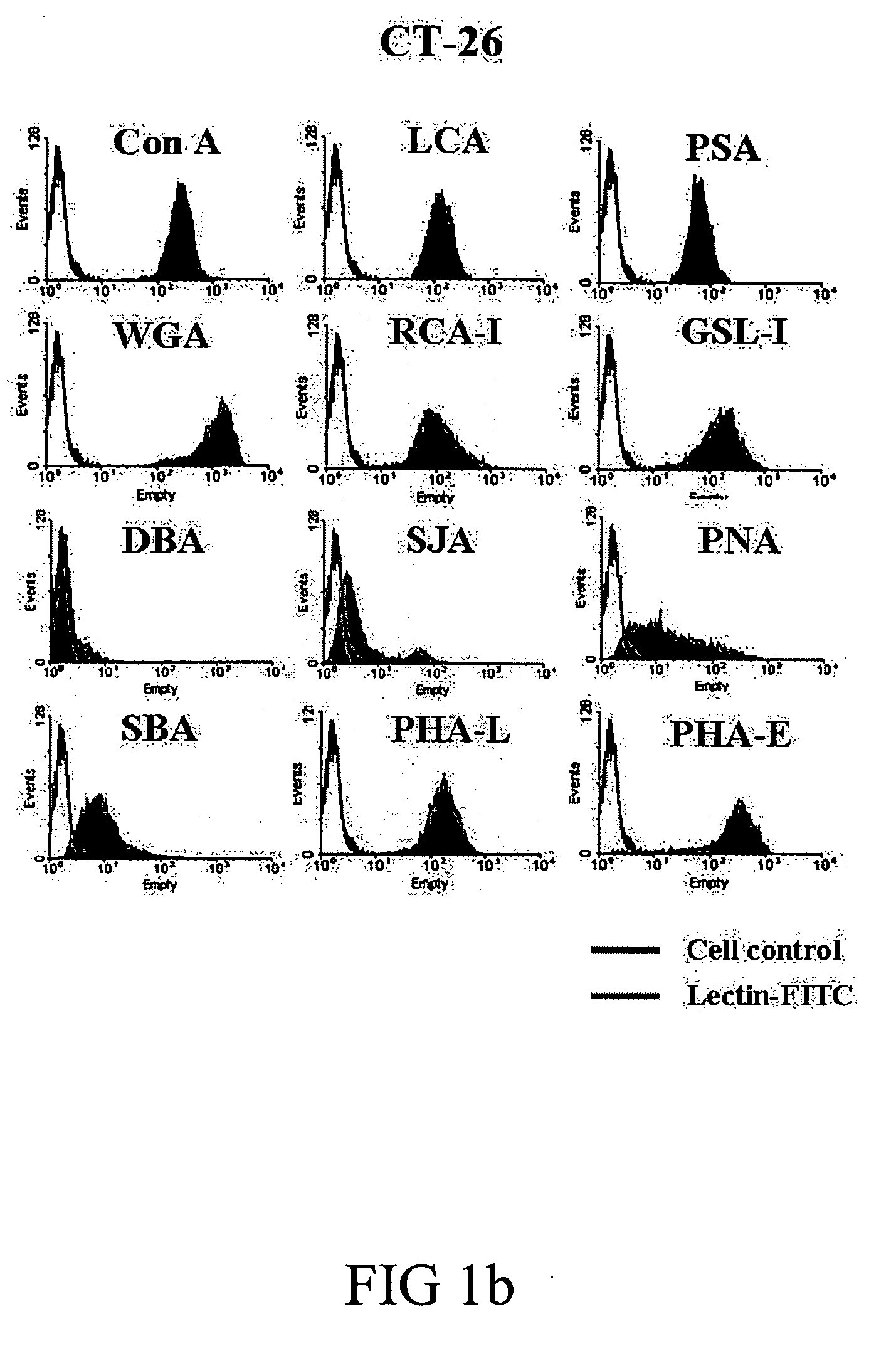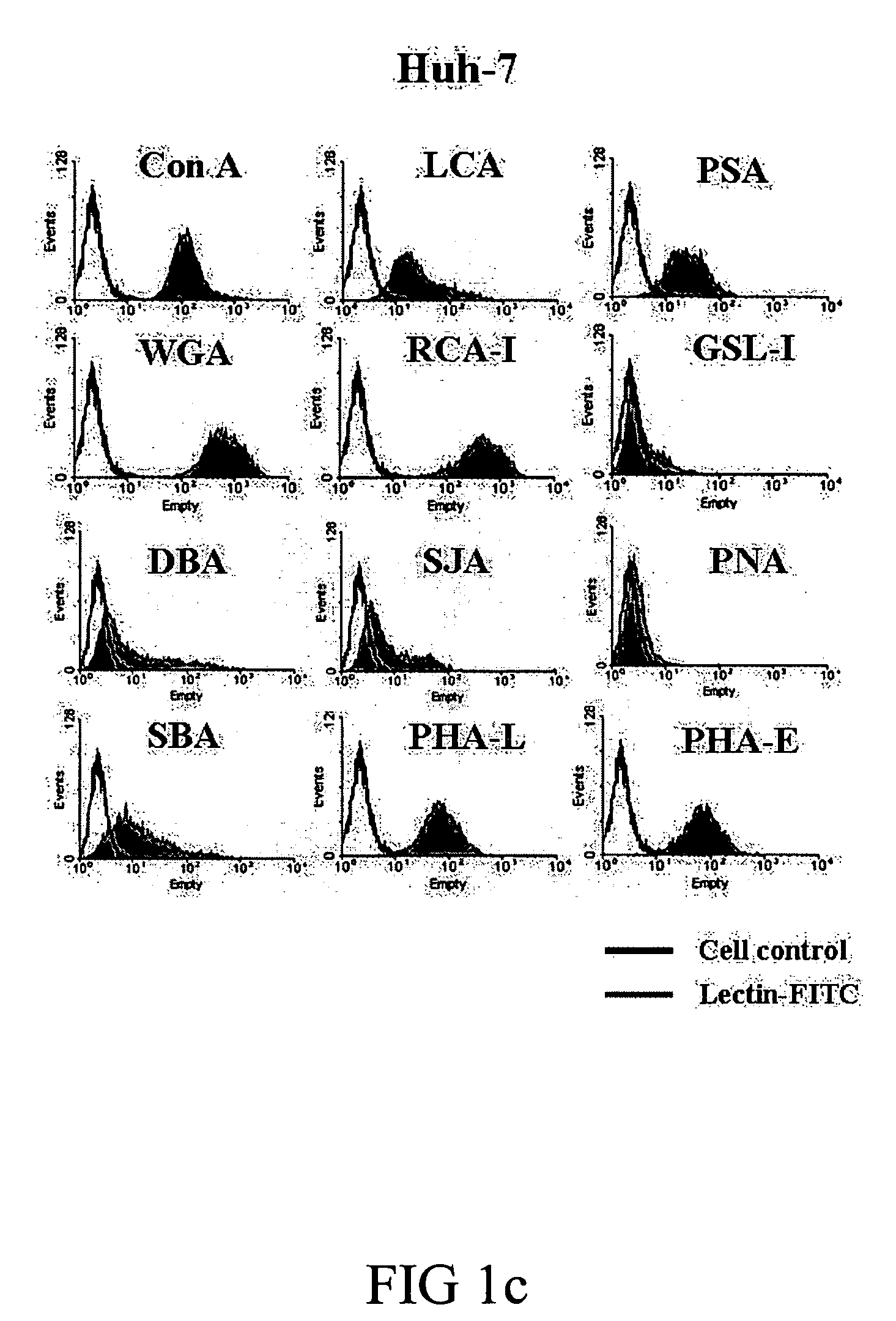Method for treating tumor and/or preventing tumor metastasis and relapse
a tumor and metastasis technology, applied in the field of tumor treatment and/or preventing tumor metastasis and relapse, can solve the problems of multiple mechanisms, complicated tumor growth, and failure of phaseolus vulgaris leucoagglutinin alone in vivo to eliminate plasmacytoma in mice, so as to prevent tumor metastasis and inhibit tumor relapse
- Summary
- Abstract
- Description
- Claims
- Application Information
AI Technical Summary
Benefits of technology
Problems solved by technology
Method used
Image
Examples
example 1
Screening Lectin Capable of Binding to Tumor Cells and Lymphocytes and Inducing Their Apoptosis and Proliferation, Respectively
[0050] Cell lines and mice. BABL / c hepatoma cell line, ML-1, was kindly provided by Dr. CP Hu (Department of Medical Research, Veterans General Hospital). ML-14a cells were adapted from ML-1 cells in BABL / c mice for four generations to increase their tumorogenesity in the liver. Human hepatoma cell lines (Huh-7 and HepG2) were obtained from the Cell Collection and Research Center (CCRC, Hsin-Chu, Taiwan) while murine colon cancer cell line CT-26 was obtained from American Type Culture Collection (Manassas, Va.). All cell lines were cultured in DMEM (Gibco®, Grand Island, N.Y.) supplemented with 10% FBS, L-glutamine and penicillin-streptomycin. BABL / c mice (male, 8-10 weeks old) were purchased from National Laboratory Animal Center (Taipei, Taiwan). The animals were raised and cared for according to the guidelines set up by the National Science Council, ROC....
example 2
Binding Assay of Con A to Mannose Residues of the Hepatoma Cells and Lymphocytes and Apoptosis and Proliferation Induction, Respectively
[0057] Lectin binding assay. ML-14a, CT-26, Huh-7, HepG2 and mouse splenocytes (1×105) were suspended in staining buffer (DMEM containing 2% FBS and 0.1% NaN3) and co-incubated with 5 μg / mL of FITC-conjugated Con A (Vector®, Burlingame, Calif.) for 30 minutes at 37° C. The binding of Con A to cells was detected by flow cytometry. Methyl-αD-mannopyranoside (0.5 M) was used to block the specific binding.
[0058] Inhibition of hepatoma cell growth and induction of apoptosis by Con A. ML-14a, CT-26, Huh-7 and HepG2 cells harvested by trypsinization were seeded at 1×105 cells into each well of 12-well plates at 37° C. overnight. Different concentrations of Con A were incubated with tumor cells for 72 h. After incubation, cell growth was measured by counting viable cells with Eosin Y exclusion staining. For apoptotic assay, cells harvested at various time...
example 3
Con A Inhibited Liver Tumor Nodule Formation in vivo
[0060] Murine in situ hepatoma model. A murine in situ hepatoma model was set up by intrasplenic injection of 1×106 viable ML-14a cells in 0.1 mL of DMEM into anesthetized mice (Pentobarbital, 50 mg / kg i.p.). The ML-14a first colonized in the spleen, and then migrated into the liver forming liver nodules of varied size and number beginning 1 week after injection. 30 days post intrasplenic injection, the livers of hepatoma-bearing mice were removed to determine the number and size of the tumors. If the liver tumor nodules were uncountable, instead the liver weight was measured to evaluate the anti-tumor effect. The extent of liver injury was assessed by determination of serum alanine aminotransferase (ALT), and serum asparate aminotransferase (AST) activities. In some experiments, mouse livers were removed and fixed with 3.7% formaldehyde, and the tissue sections were stained with hematoxylin and eosin Y. In the in vivo depletion o...
PUM
| Property | Measurement | Unit |
|---|---|---|
| volume | aaaaa | aaaaa |
| composition | aaaaa | aaaaa |
| concentrations | aaaaa | aaaaa |
Abstract
Description
Claims
Application Information
 Login to View More
Login to View More - R&D
- Intellectual Property
- Life Sciences
- Materials
- Tech Scout
- Unparalleled Data Quality
- Higher Quality Content
- 60% Fewer Hallucinations
Browse by: Latest US Patents, China's latest patents, Technical Efficacy Thesaurus, Application Domain, Technology Topic, Popular Technical Reports.
© 2025 PatSnap. All rights reserved.Legal|Privacy policy|Modern Slavery Act Transparency Statement|Sitemap|About US| Contact US: help@patsnap.com



